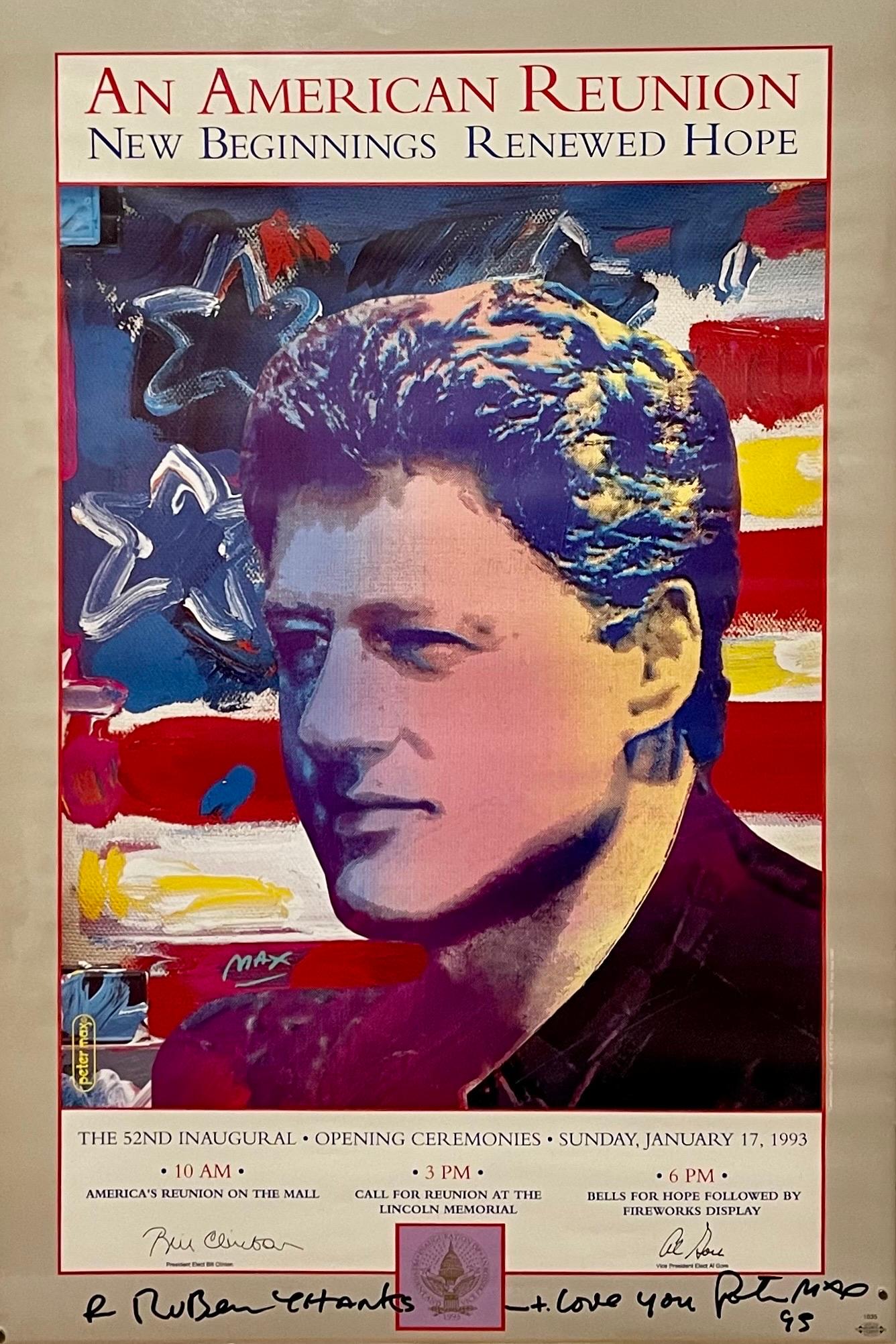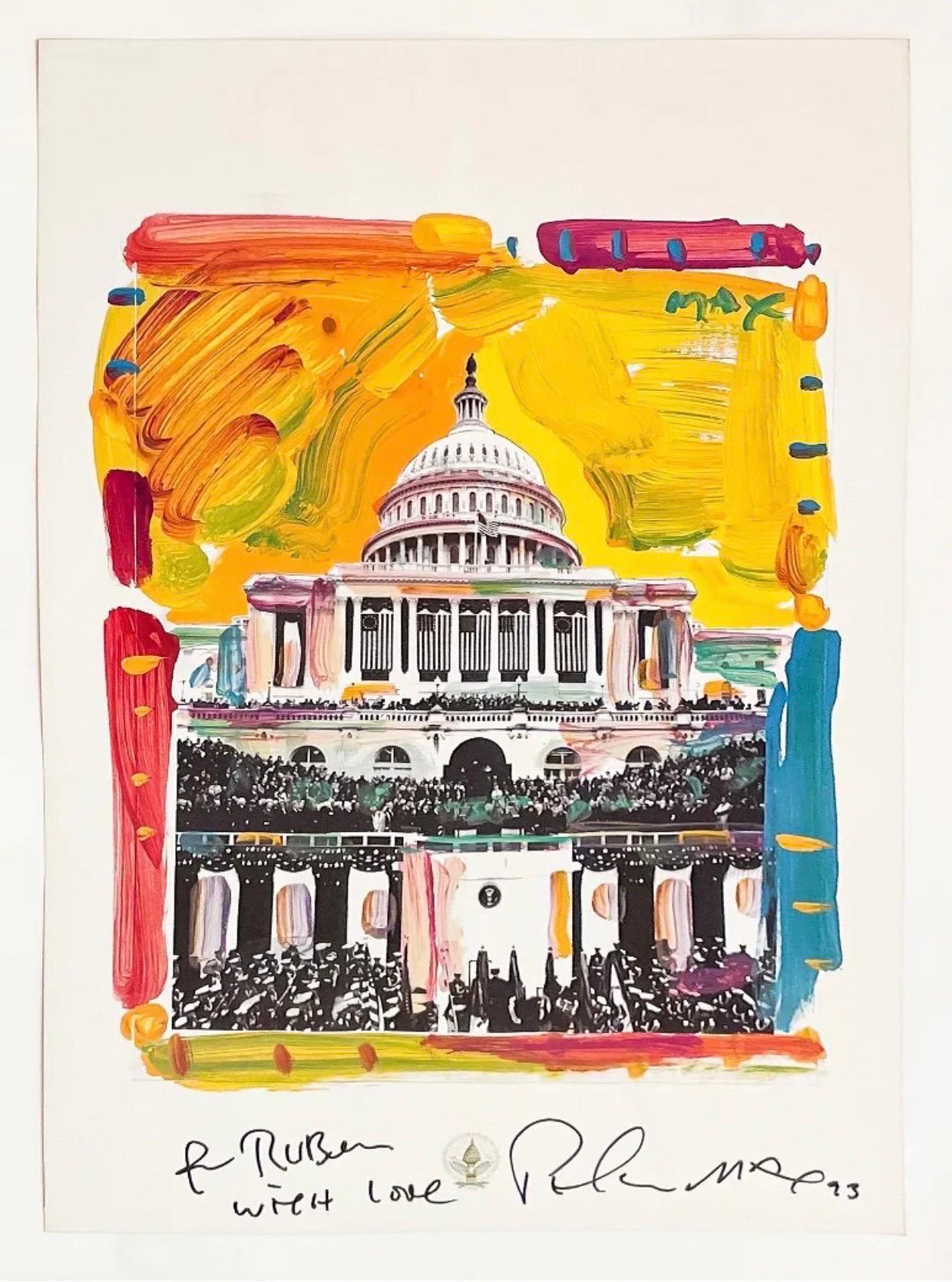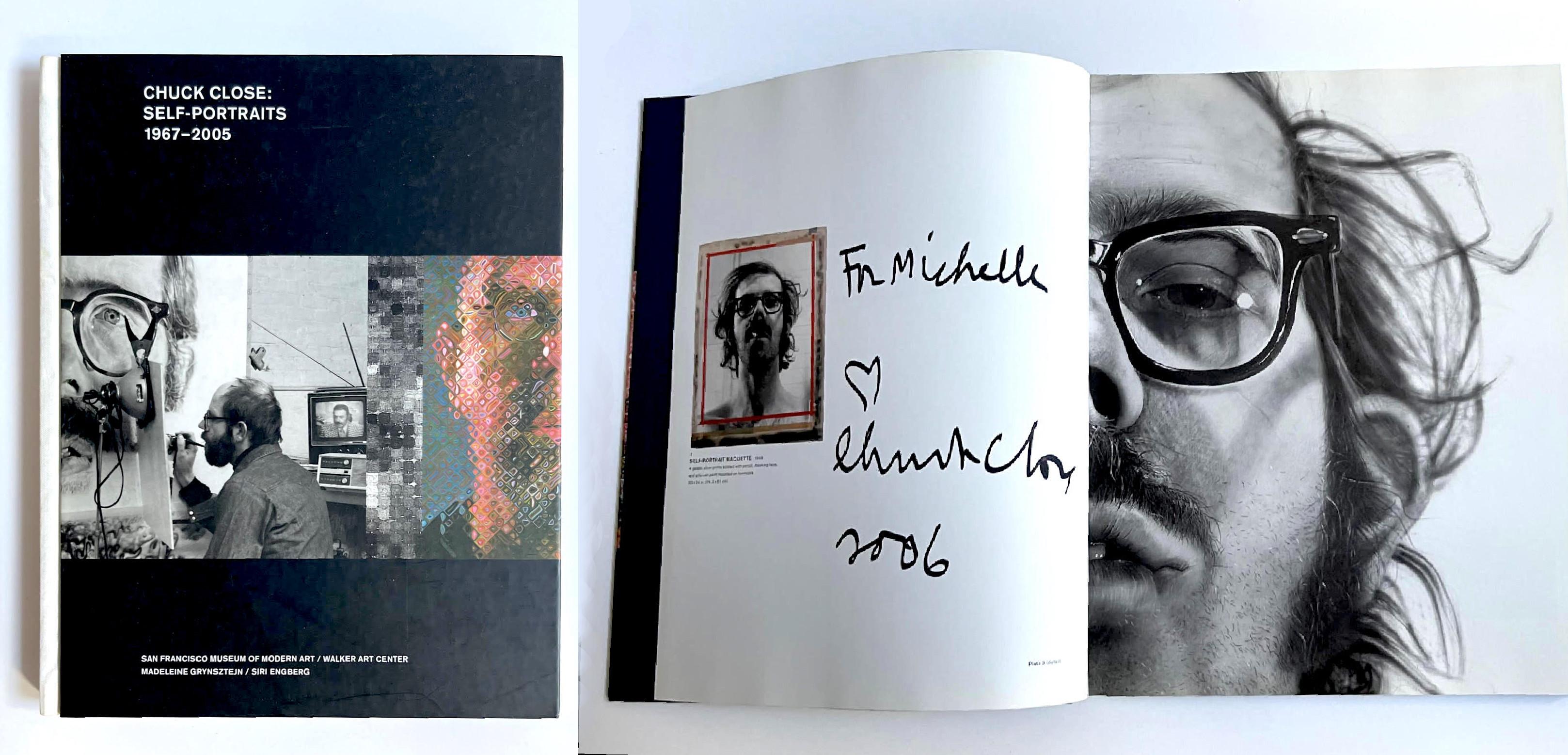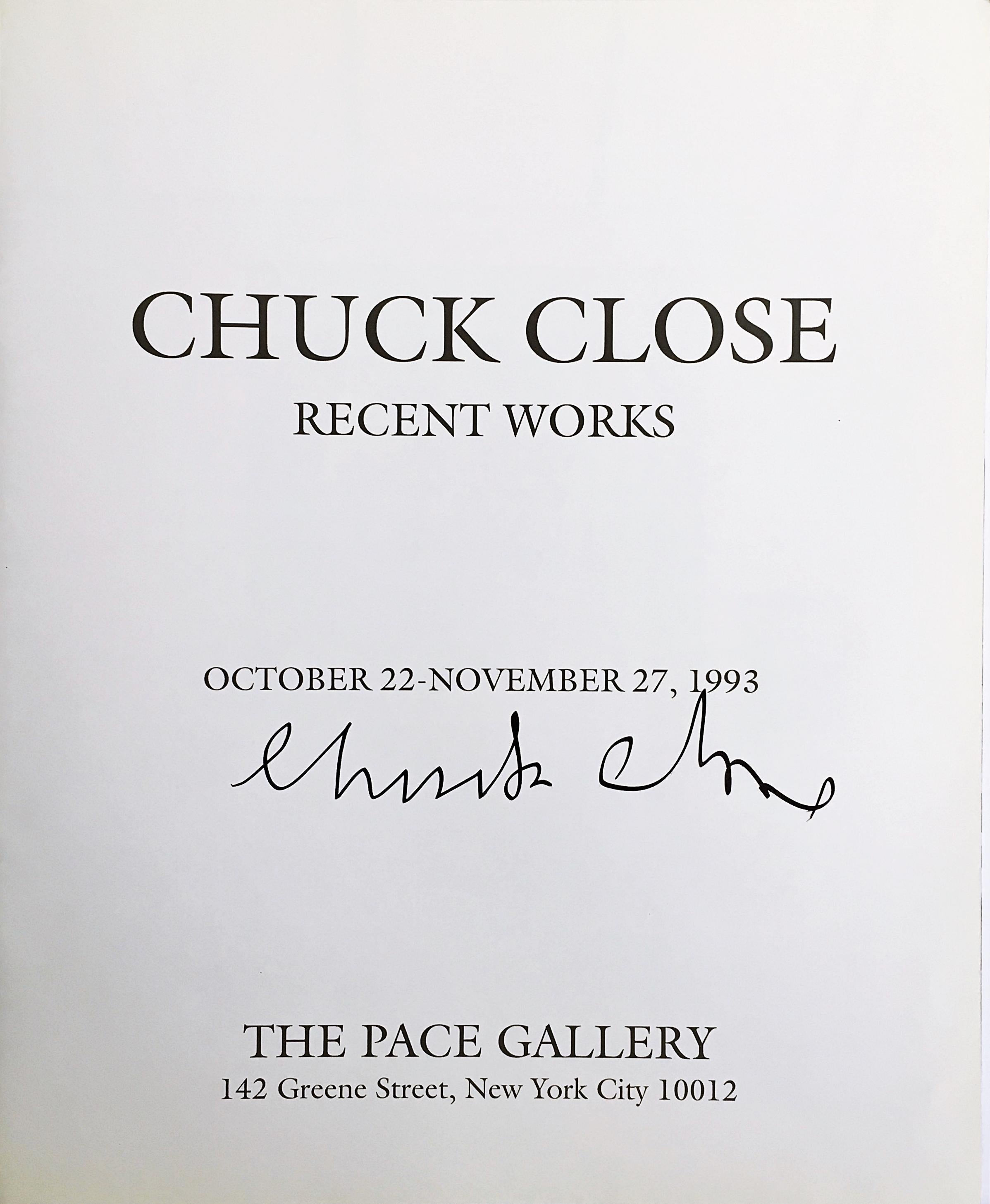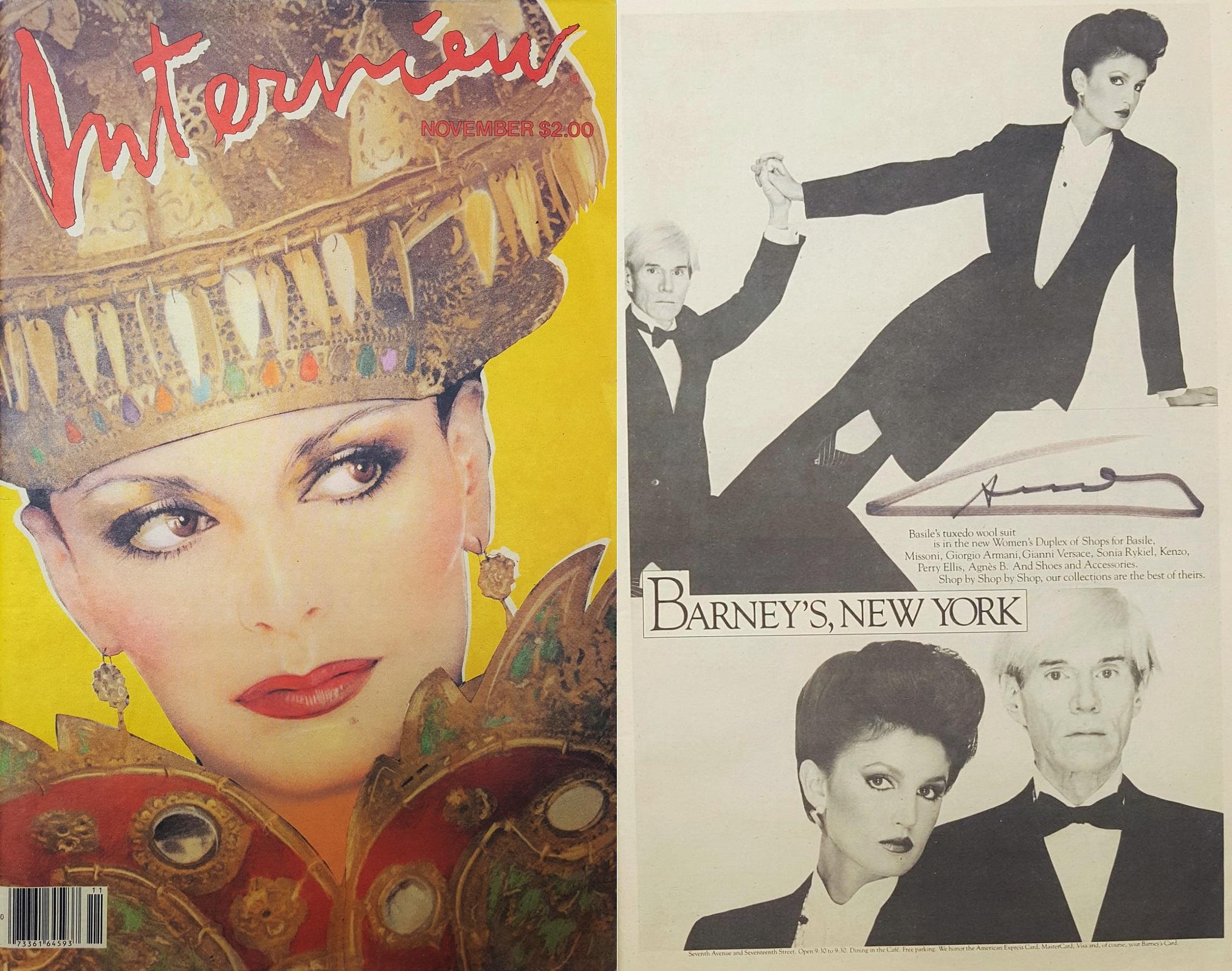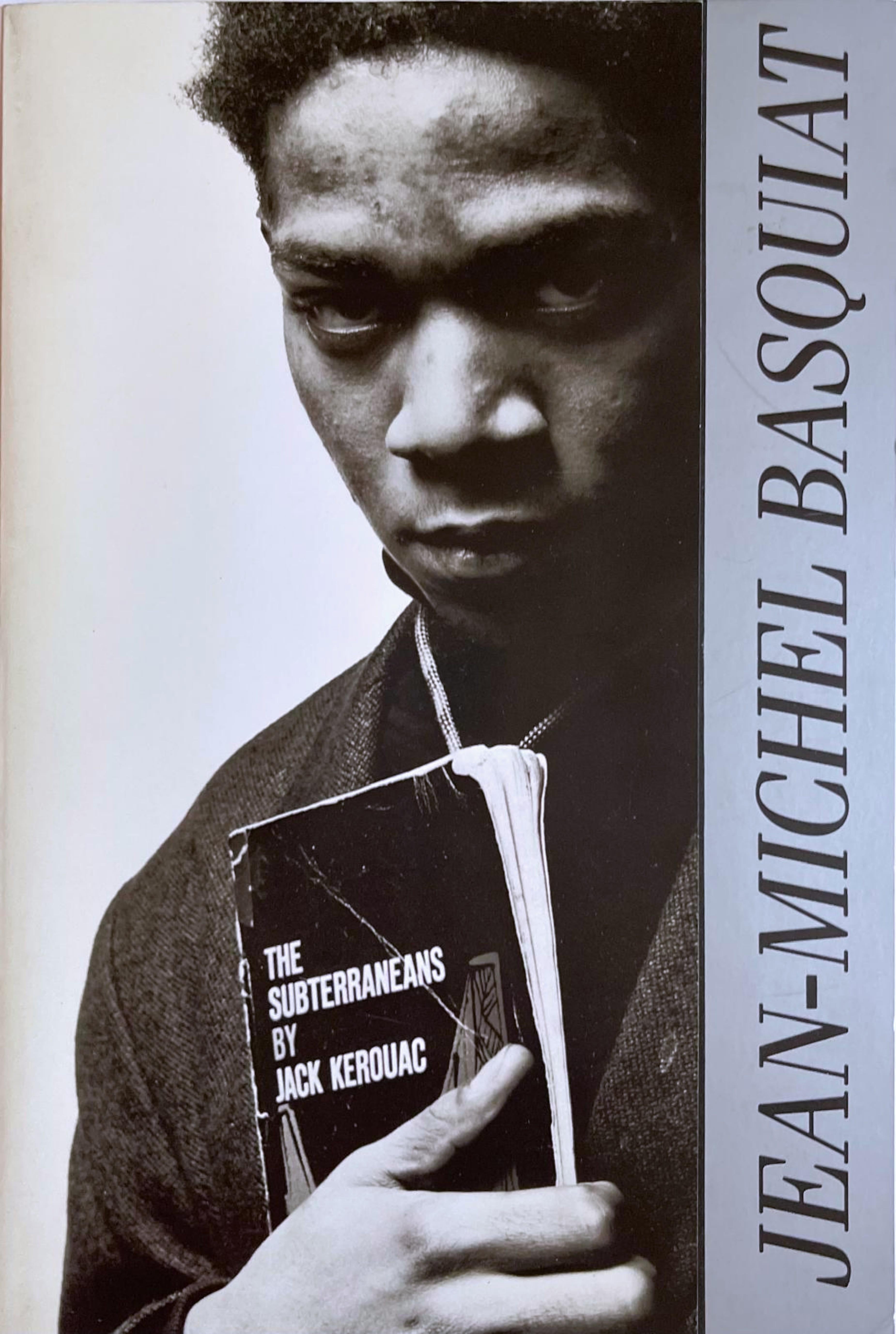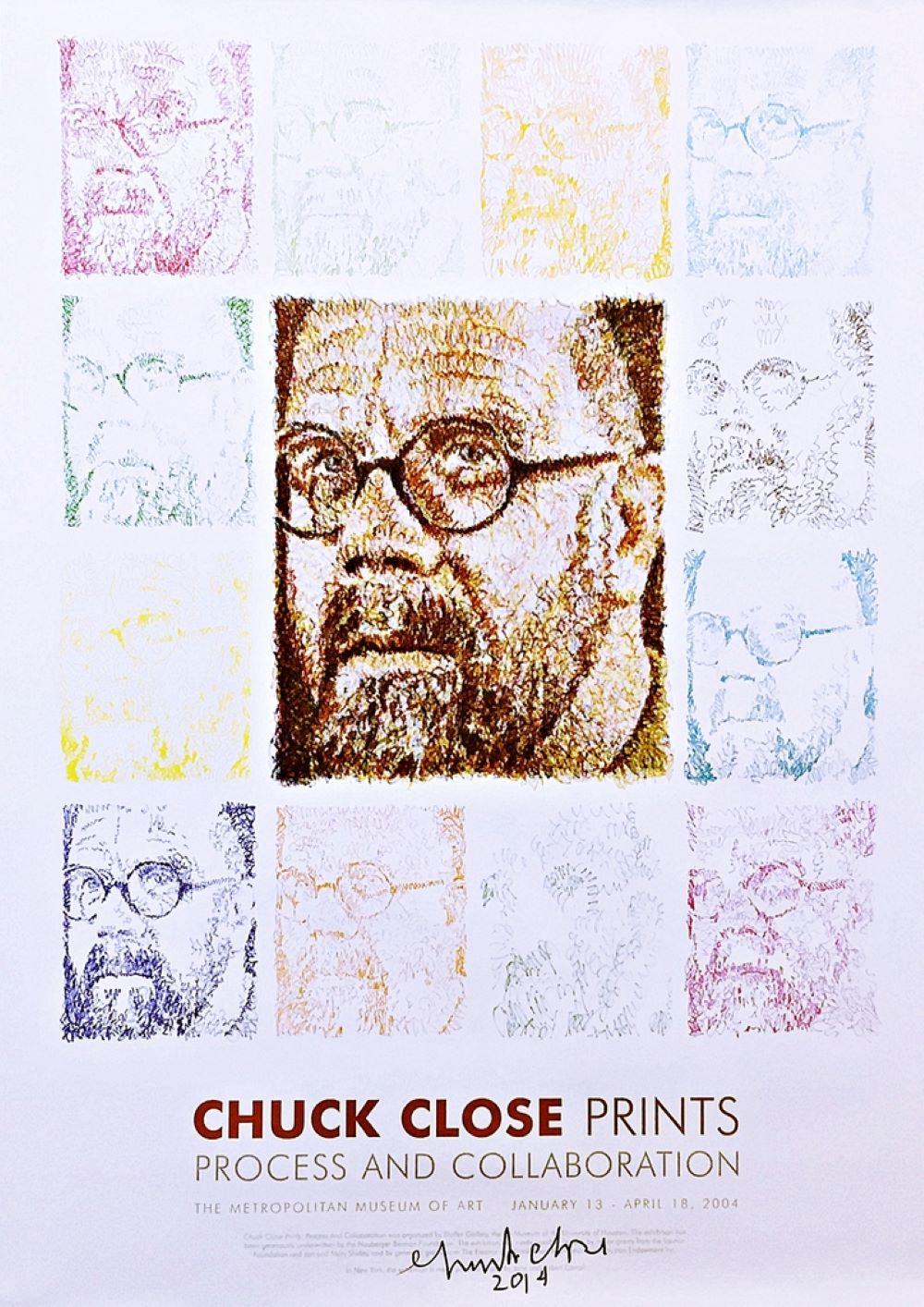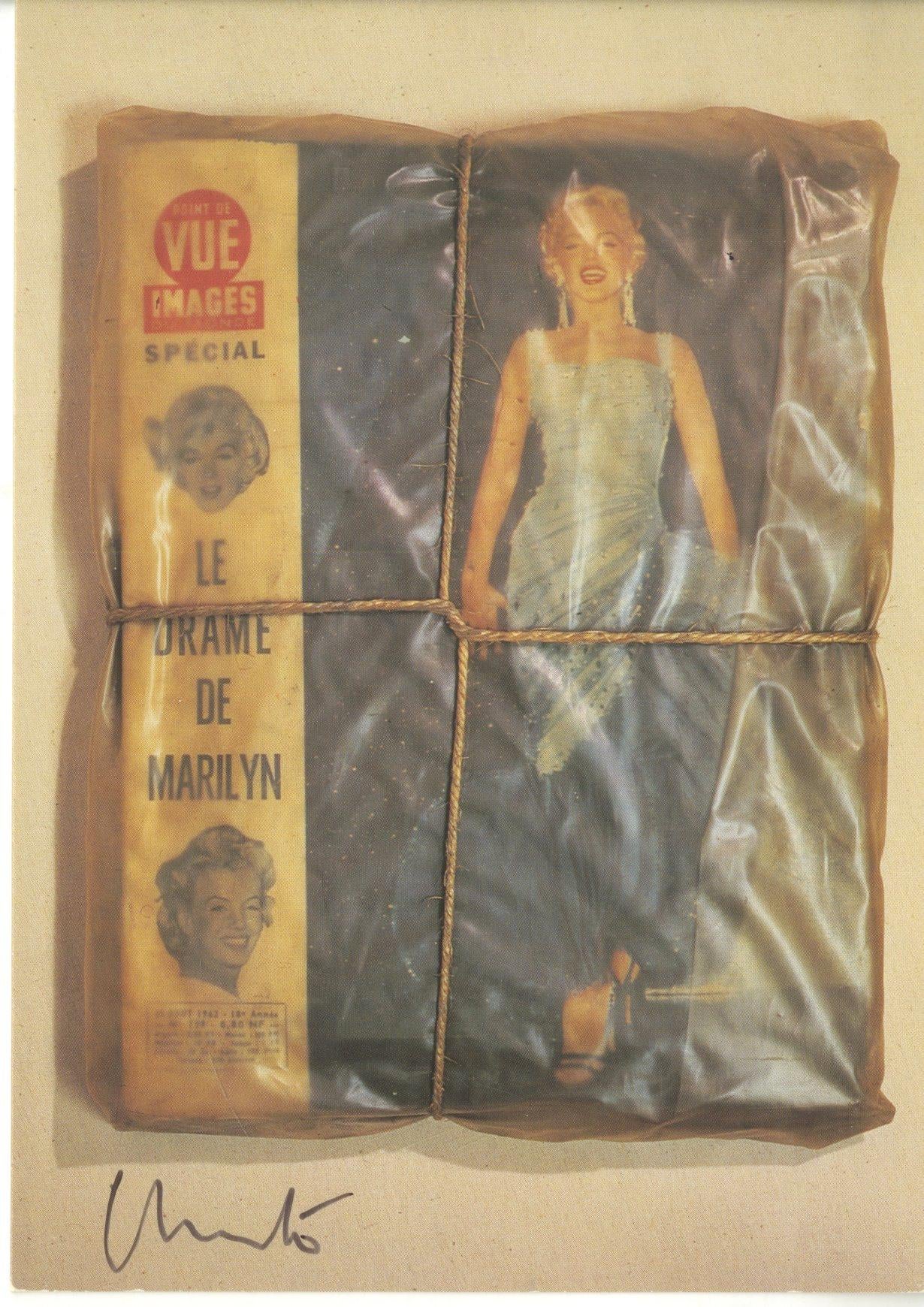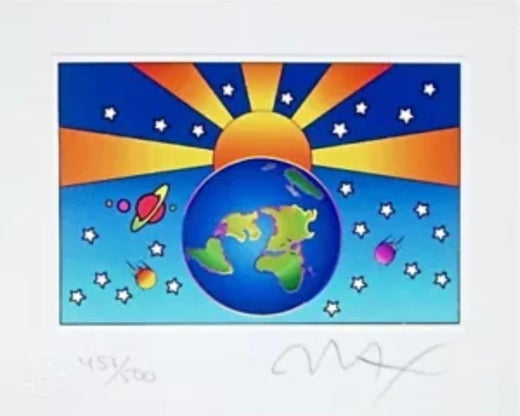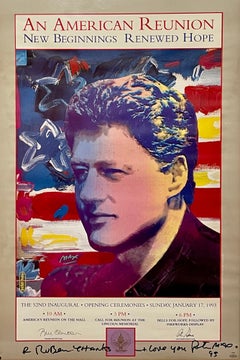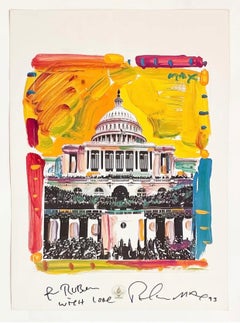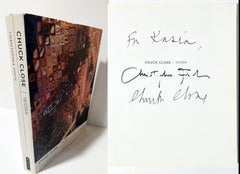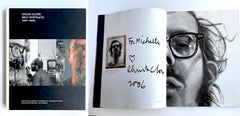
Vintage 1970's Poster Artists Rights Pop Art Hand Signed Peter Max Lithograph
View Similar Items
Peter MaxVintage 1970's Poster Artists Rights Pop Art Hand Signed Peter Max Lithograph1974
1974
About the Item
- Creator:Peter Max (1937, American, German)
- Creation Year:1974
- Dimensions:Height: 23 in (58.42 cm)Width: 37.5 in (95.25 cm)
- Medium:
- Movement & Style:
- Period:
- Condition:good. minor wear. minor wear to frame. possible toning to colors. please see photos.
- Gallery Location:Surfside, FL
- Reference Number:1stDibs: LU38210219382
Peter Max
Born Peter Max Finkelstein in Berlin in 1937, psychedelic Pop art icon Peter Max spent the first part of his childhood in Shanghai after his parents emigrated from Germany to flee the Nazis. While there, Max developed his deep interest in American pop culture — namely comic books, jazz and cinema. Max’s paintings, graphic design and illustrations, which were inspired by these interests, were also informed by his experience with synesthesia, a sensory condition that causes him to see music and hear color.
After relocating to Haifa, Israel, then Paris, where he spent a significant amount of time in sketching classes at the Louvre, a teenage Max and his family finally moved to the United States, settling in Brooklyn. Max enrolled in the Art Students League of New York in 1956, training under Frank J. Reilly, and then the School of Visual Arts. Throughout art school, Max focused on photorealism, but he found the style too restrictive. When he graduated and opened his graphic design studio with friends in 1962, he began experimenting with abstraction and color — just in time for the psychedelic era.
The technicolor works for which Max would become known are characterized by big and bold graphic qualities — not dissimilar to what you’d find in his beloved comic books. Some deeper themes emerged across his work too: Max spent a good portion of the 1960s and 1970s creating his signature cosmic style, inspired by his fascination with astronomy and Eastern philosophies.
For Max and his partners, the graphic design business was highly successful, with commissions rolling in from advertising agencies, magazines and even Hollywood in the form of movie posters. The artist was featured on the cover of Life in 1969, and by the 1970s, he was practically a household name. Max's body of work extended into product design, including a line of clocks for General Electric, while his domination of the commercial art scene continued for decades. He was commissioned to paint a postage stamp honoring the World’s Fair of 1974 (Expo ‘74); a Statue of Liberty series in which some proceeds went on to fund the statue’s restoration; posters and other advertising materials for major events like the Super Bowl, the U.S. Open and the Grammys; a Dale Earnhardt race car; and even the hull of the Norwegian Breakaway cruise ship.
Commercial activities aside, Max has long been the subject of many museum exhibitions, from his first solo show in 1970, “The World of Peter Max,” at the M.H. de Young Memorial Museum in San Francisco to 2016's “Peter Max: 50 Years of Cosmic Dreaming” at the Tampa Museum of Art in Florida. Today, his work belongs to the collections of the Museum of Modern Art in New York, the Philadelphia Museum of Art and other institutions.
Find an explosively vibrant collection of Peter Max paintings, prints and other works on 1stDibs.
- Vintage Poster President Bill Clinton Pop Art Hand Signed Peter Max LithographBy Peter MaxLocated in Surfside, FLArtist: Peter Max, German/American (1937 - ) Title: Bill Clinton Inaugural, An American Reunion, New Beginnings, Renewed Hope Hand signed in marker with dedication Year: 1993 Medium: Poster Size: 36 in. x 24 in Provenance: collection of Friede & Rubin L. Gorewitz Peter Max (born Peter Max Finkelstein, October 19, 1937) is a German-American artist known for using bright colors in his work. Works by Max are associated with the visual arts and culture of the 1960s, particularly psychedelic art and pop art. Max was born in Berlin, the son of German Jews, Salla and Jakob. They fled Berlin in 1938, settling in Shanghai, China, where they lived for the next ten years. In 1948, the family moved to Haifa, Israel, where they lived for several years. Peter attended school in Mount Carmel, but was often drawing instead of taking notes. His principal suggested to his parents that he be put in art lessons after school, and he began to study under Professor Hünik, a Viennese Expressionist. From Israel, the family continued moving westward and stopped in Paris for several months—an experience that Max said greatly influenced his appreciation for art. In their short time in Paris, Max's mother enrolled him in drawing classes at the Louvre, where he began to study Fauvism. After nine months in Paris, Max and his family made their final move, settling in Brooklyn, New York, USA. In 1956, Max began his formal art training at the Art Students League of New York in Manhattan, studying anatomy, figure drawing and composition under Frank J. Reilly who had studied at the League alongside Norman Rockwell. In 1962, Max started a small Manhattan arts studio known as "The Daly & Max Studio," with friend Tom Daly. Daly and Max were joined by friend and mentor Don Rubbo, and the three worked as a group on books and advertising for which they received industry recognition. Much of their work incorporated antique photographic images as elements of collage. Max's interest in astronomy contributed to his self-described "Cosmic '60s" period, which featured psychedelic, counter culture imagery. Max's art was popularized nationally through TV commercials such as his 1968 "un cola" ad for the soft drink 7 Up which helped drive sales of his art posters and other merchandise. In 1967, Max solidified his place as a counter cultural icon by designing the flyers for the second ever 'Be In', a political gathering of mainly hippies in New York's Central Park after the Easter parade on March 26, 1967. In 1970, many of Max's products and posters were featured in the exhibition "The World of Peter Max," which opened at the M.H. de Young Memorial Museum in San Francisco. The United States Postal Service commissioned Max to create the 10-cent postage stamp to commemorate the Expo '74 World's Fair in Spokane, Washington, and Max drew a colorful psychedelic scene with a "Cosmic Jumper" and a "Smiling Sage" against a backdrop of a cloud, sun rays and a ship at sea on the theme of "Preserve the Environment." According to The New York Times, "His DayGlo-inflected posters became wallpaper for the turn on, tune in, drop out generation." On July 4, 1976, Max began his Statue of Liberty series leading to his efforts with Chrysler CEO Lee Iacocca to help in the restoration of the statue. Max has been the official artist for many major events, including the 1994 World Cup, the Grammy Awards, the Rock and Roll Hall of Fame, the Super Bowl and others. In 2000, Max designed the paint scheme Dale Earnhardt...Category
1990s Pop Art Portrait Prints
MaterialsLithograph, Offset
- Vintage Poster Clinton Capitol Building Pop Art Hand Signed Peter Max LithographBy Peter MaxLocated in Surfside, FLArtist: Peter Max, German/American (1937 - ) From the President Bill Clinton Inaugural, An American Reunion, New Beginnings, Renewed Hope Poster depicting the 1993 inauguration of Bill Clinton at the Capitol Building. Hand signed in marker with dedication Year: 1993 Medium: Poster Size: 36 in. x 24 in Provenance: collection of Friede & Rubin L. Gorewitz Peter Max (born Peter Max Finkelstein, October 19, 1937) is a German-American artist known for using bright colors in his work. Works by Max are associated with the visual arts and culture of the 1960s, particularly psychedelic art and pop art. Max was born in Berlin, the son of German Jews, Salla and Jakob. They fled Berlin in 1938, settling in Shanghai, China, where they lived for the next ten years. In 1948, the family moved to Haifa, Israel, where they lived for several years. Peter attended school in Mount Carmel, but was often drawing instead of taking notes. His principal suggested to his parents that he be put in art lessons after school, and he began to study under Professor Hünik, a Viennese Expressionist. From Israel, the family continued moving westward and stopped in Paris for several months—an experience that Max said greatly influenced his appreciation for art. In their short time in Paris, Max's mother enrolled him in drawing classes at the Louvre, where he began to study Fauvism. After nine months in Paris, Max and his family made their final move, settling in Brooklyn, New York, USA. In 1956, Max began his formal art training at the Art Students League of New York in Manhattan, studying anatomy, figure drawing and composition under Frank J. Reilly who had studied at the League alongside Norman Rockwell. In 1962, Max started a small Manhattan arts studio known as "The Daly & Max Studio," with friend Tom Daly. Daly and Max were joined by friend and mentor Don Rubbo, and the three worked as a group on books and advertising for which they received industry recognition. Much of their work incorporated antique photographic images as elements of collage. Max's interest in astronomy contributed to his self-described "Cosmic '60s" period, which featured psychedelic, counter culture imagery. Max's art was popularized nationally through TV commercials such as his 1968 "un cola" ad for the soft drink 7 Up which helped drive sales of his art posters and other merchandise. In 1967, Max solidified his place as a counter cultural icon by designing the flyers for the second ever 'Be In', a political gathering of mainly hippies in New York's Central Park after the Easter parade on March 26, 1967. In 1970, many of Max's products and posters were featured in the exhibition "The World of Peter Max," which opened at the M.H. de Young Memorial Museum in San Francisco. The United States Postal Service commissioned Max to create the 10-cent postage stamp to commemorate the Expo '74 World's Fair in Spokane, Washington, and Max drew a colorful psychedelic scene with a "Cosmic Jumper" and a "Smiling Sage" against a backdrop of a cloud, sun rays and a ship at sea on the theme of "Preserve the Environment." According to The New York Times, "His DayGlo-inflected posters became wallpaper for the turn on, tune in, drop out generation." On July 4, 1976, Max began his Statue of Liberty series leading to his efforts with Chrysler CEO Lee Iacocca to help in the restoration of the statue. Max has been the official artist for many major events, including the 1994 World Cup, the Grammy Awards, the Rock and Roll Hall of Fame, the Super Bowl and others. In 2000, Max designed the paint scheme Dale Earnhardt...Category
1990s Pop Art Portrait Prints
MaterialsLithograph, Offset
- Komar & Melamid Peace I Lithograph 1986 Russian Avant GardeBy Komar & MelamidLocated in Surfside, FLKomar and Melamid combine various photographs of Tolstoy with their own renderings, cropping and overprinting the 19th-century moralist's portrait in...Category
1980s Pop Art Portrait Prints
MaterialsLithograph
- Silkscreen Day Glo Fluorescent 1960's Japanese Pop Art Print Samurai KimonoBy Ushio ShinoharaLocated in Surfside, FLUshio Shinohara (born 1932, Tokyo), nicknamed “Gyu-chan”, is a Japanese Neo-Dadaist artist. His bright, large work has been exhibited internationally at institutions including the Hara Museum of Contemporary Art, Centre Georges Pompidou, the Guggenheim Museum SoHo, National Museum of Modern Art, Tokyo, Leo Castelli Gallery, New York, Museum of Contemporary Art, Los Angeles and The Metropolitan Museum of Art, Seoul and others. Shinohara and his wife, Noriko, are the subjects of a documentary film by Zachary Heinzerling called Cutie and the Boxer (2013). Shinohara's parents instilled in him a love for painters such as Paul Cézanne, Vincent Van Gogh and Paul Gauguin. His father was a tanka poet who was taught by Wakayama Bokusui. Shinohara’s mother was a painter who went to the Woman’s Art University (Joshibijutsu Daigaku) in Tokyo. In 1952 Shinohara entered the Tokyo Art University (later renamed to Tokyo University of the Arts), majoring in oil painting, however he left before graduation in 1957. In 1960 Shinohara participated in a group called "Neo-Dada Organizers". (Masunobu Yoshimura, Genpei Akasegawa, Shusaku Arakawa, Ushio Shinohara, Sho Kazakura, Tomio Miki, Tetsumi Kudo, Natsuyuki Nakanishi) This group of artists showed their works of art in an exhibition in the 1960s called the Yomiuri Independent Exhibition. This exhibition was sponsored by a newspaper, was open to the public, and was not judged by anyone. This type of exhibition was a form of an anti-salon and was a stepping stone for Shinohara’s sculptures of found objects which acquired the label of “junk art...Category
1960s Pop Art Abstract Prints
MaterialsScreen
- Silkscreen Oiran Day Glo Fluorescent 1960's Japanese Pop Art Print Geisha KimonoBy Ushio ShinoharaLocated in Surfside, FLUshio Shinohara (born 1932, Tokyo), nicknamed “Gyu-chan”, is a Japanese Neo-Dadaist artist. His bright, large work has been exhibited internationally at institutions including the Hara Museum of Contemporary Art, Centre Georges Pompidou, the Guggenheim Museum SoHo, National Museum of Modern Art, Tokyo, Leo Castelli Gallery, New York, Museum of Contemporary Art, Los Angeles and The Metropolitan Museum of Art, Seoul and others. Shinohara and his wife, Noriko, are the subjects of a documentary film by Zachary Heinzerling called Cutie and the Boxer (2013). Shinohara's parents instilled in him a love for painters such as Paul Cézanne, Vincent Van Gogh and Paul Gauguin. His father was a tanka poet who was taught by Wakayama Bokusui. Shinohara’s mother was a painter who went to the Woman’s Art University (Joshibijutsu Daigaku) in Tokyo. In 1952 Shinohara entered the Tokyo Art University (later renamed to Tokyo University of the Arts), majoring in oil painting, however he left before graduation in 1957. In 1960 Shinohara participated in a group called "Neo-Dada Organizers". (Masunobu Yoshimura, Genpei Akasegawa, Shusaku Arakawa, Ushio Shinohara, Sho Kazakura, Tomio Miki, Tetsumi Kudo, Natsuyuki Nakanishi) This group of artists showed their works of art in an exhibition in the 1960s called the Yomiuri Independent Exhibition. This exhibition was sponsored by a newspaper, was open to the public, and was not judged by anyone. This type of exhibition was a form of an anti-salon and was a stepping stone for Shinohara’s sculptures of found objects which acquired the label of “junk art...Category
1960s Pop Art Abstract Prints
MaterialsScreen
- Abstract Expressionist Hyman Bloom Judaica Hand Signed Poster Rabbi with TorahBy Hyman BloomLocated in Surfside, FLThis is not editioned. According to his wife this was done privately for his 80th birthday and just given to friends and family. they were not sold. This is from a group of very few that were hand signed by Hyman Bloom for his close friend the artist Martin Sumers. It depicts a 1955 charcoal drawing Rabbi with Torah. Provenance: Acquired from the Martin Sumers estate collection. Hyman Bloom (March 29, 1913 – August 26, 2009) was a Latvian-born American painter. His work was influenced by his Jewish heritage and Eastern religions as well as by artists including Altdorfer, Grünewald, Caravaggio, Rembrandt, Blake, Bresdin, James Ensor and Chaim Soutine. He first came to prominence when his work was included in the 1942 Museum of Modern Art exhibition "Americans 1942 -- 18 Artists from 9 States". MoMA purchased 2 paintings from the exhibition and Time magazine singled him out as a "striking discovery" in their exhibition review. His work was selected for both the 1948 and 1950 Venice Biennale exhibitions and his 1954 retrospective traveled from Boston's Institute of Contemporary Art to the Albright Gallery and the de Young Museum before closing out at The Whitney Museum of American Art in 1955. In a 1954 interview with Yale art professor Bernard Chaet, Willem de Kooning indicated that he and Jackson Pollock both considered Bloom to be “America’s first abstract expressionist”, a label that Bloom would disavow. Starting in the mid 1950s his work began to shift more towards works on paper and he exclusively focused on drawing throughout the 1960s, returning to painting in 1971. He continued both drawing and painting until his death in 2009 at the age of 9 Hyman Bloom (né Melamed) was born into an orthodox Jewish family in the tiny Jewish village of Brunavišķi in what is now Latvia, then part of the Russian Empire At a young age Bloom planned to become a rabbi, but his family could not find a suitable teacher. In the eighth grade he received a scholarship to a program for gifted high school students at the Museum of Fine Arts. He attended the Boston High School of Commerce, which was near the museum. He also took art classes at the West End Community Center, a settlement house. The classes were taught by Harold Zimmerman, a student at the School of the Museum of Fine Arts, who also taught the young Jack Levine at another settlement house in Roxbury. When Bloom was fifteen, he and Levine began studying with a well-known Harvard art professor, Denman Ross, who rented a studio for the purpose and paid the boys a weekly stipend to enable them to continue their studies rather than take jobs to support their families. He took Bloom and Levine on a field trip to the Museum of Modern Art in New York, where Bloom was impressed by the work of Rouault and Soutine and began experimenting with their expressive painting styles. In the 1930s Bloom worked sporadically for the Public Works of Art Project and the Federal Art Project (WPA), He shared a studio in the South End with Levine and another artist, Betty Chase. It was during this period that he developed a lifelong interest in Eastern philosophy and music, and in Theosophy. He first received national attention in 1942 when thirteen of his paintings were included in the Museum of Modern Art (MoMA) exhibition Americans 1942: 18 Artists from 9 States, curated by Dorothy Miller. MoMA purchased two of his paintings from that exhibition, and he was featured in Time magazine. The titles of his paintings in the exhibition reflect some of his recurring themes. Two were titled The Synagogue, another, Jew with the Torah; Bloom was actually criticized by one reviewer for including "stereotypical" Jewish images. He also had two paintings titled The Christmas Tree, and another titled The Chandelier, both subjects he returned to repeatedly. Another, Skeleton (c. 1936), was followed by a series of cadaver paintings in the forties, and The Fish (c. 1936) was one of many paintings and drawings of fish he created over the course of his career. Bloom was associated at first with the growing Abstract Expressionist movement. Willem de Kooning and Jackson Pollock, who first saw Bloom's work at the MoMA exhibition, considered Bloom "the first Abstract Expressionist artist in America." In 1950 he was chosen, along with the likes of de Kooning, Pollock, and Arshile Gorky, to represent the United States at the Venice Biennale. That same year Elaine de Kooning wrote about Bloom in ARTnews, noting that in paintings such as The Harpies, his work approached total abstraction: "the whole impact is carried in the boiling action of the pigment". In 1951 Thomas B. Hess reproduced Bloom's Archaeological Treasure in his first book, Abstract Painting: Background and American Phase, along with works by Picasso, Pollock, and others. Both de Kooning and Hess remarked on Bloom's expressive paint handling, a key characteristic of Abstract Expressionist painting. As abstract expressionism dominated the American art world, Bloom became disenchanted with it, calling it "emotional catharsis, with no intellectual basis." In addition, instead of moving to New York to pursue his career, he opted to stay in Boston. As a result he fell out of favor with critics and never achieved the kind of fame that Pollock and others did. He disliked self-promotion and never placed much value on critical acclaim. Many of Bloom's paintings feature rabbis, usually holding the Torah. According to Bloom, his intentions were more artistic than religious. He began questioning his Jewish faith early in life, and painted rabbis, he claimed, because that was what he knew. Over the course of his career he produced dozens of paintings of rabbis...Category
20th Century Modern Figurative Prints
MaterialsOffset
- Book: CHUCK CLOSE WORK (hand signed by both Chuck Close and Christopher Finch)By Chuck CloseLocated in New York, NYChuck Close CHUCK CLOSE WORK (hand signed by both Chuck Close and Christopher Finch), 2010 Hardback monograph with dust jacket (hand signed and inscribed by both artist and author) H...Category
2010s Pop Art More Art
MaterialsPaper, Ink, Mixed Media, Lithograph, Offset
- Lt. Ed. Artist Book: Business Cards (Signed by Ed Ruscha and Billy Al Bengston)Located in New York, NYEd Ruscha, Billy Al Bengston Business Cards (hand signed by Ed Ruscha and Billy Al Bengston), 1968 Mixed Media Artist's Book: Softback monograph with a latigo leather thong, silver g...Category
1960s Pop Art Portrait Prints
MaterialsLeather, Paper, Ink, Mixed Media, Lithograph, Offset, Silver Gelatin
- Book: Chuck Close Self-Portraits 1967-2005 (Signed and inscribed with a heart)By Chuck CloseLocated in New York, NYChuck Close Chuck Close: Self-Portraits 1967-2005 (Hand signed and inscribed to Michelle with heart doodle), 2005 Hardcover. Bound in publisher's origina...Category
Early 2000s Pop Art More Art
MaterialsMixed Media, Permanent Marker, Lithograph, Offset
- Oversized illustrated catalogue: Chuck Close Recent Works (Hand Signed)By Chuck CloseLocated in New York, NYChuck Close Chuck Close Recent Works (Hand Signed), 1993 Large Illustrated Exhibition Catalogue Boldly hand signed in black marker on the title page by the artist Published by PACE Gallery, New York 14 3/10 x 12 inches Unframed This oversized illustrated softcover exhibition catalogue with stiff wraps is boldly signed by Chuck Close in black marker on the title page. The catalogue itself has 44 pages and is lavishly illustrated with large full color reproductions. It is extremely scarce when hand signed by the artist. Chuck Close signed...Category
1990s Pop Art More Art
MaterialsMixed Media, Offset, Ink, Lithograph
- Interview Magazine (Diane von Furstenberg) (Signed by Andy Warhol) /// Pop ArtLocated in Saint Augustine, FLArtist: (after) Andy Warhol (American, 1928-1987) Title: "Interview Magazine (Diane von Furstenberg)" Series: Interview Magazine *Signed by Warhol in black marker inside, on third page Year: 1981 Medium: Offset-Lithography; The complete November, 1981, Vol. XI, No. 11 issue of "Interview" magazine Overall size: 17" x 11" x .25" Condition: One small tear at right center edge of cover page. In otherwise excellent condition Notes: Provenance: private collection - Sacaramento, CA; acquired at a rare book fair in Pasadena, CA from notable autograph dealer Christophe Stickel. It is boldly signed on the third page at center right within a Barney's, New York advertisement. This is immediately seen once opening the first cover page. Approx. 90 pages total. We unconditionally guarantee the signature to be authentic. "Interview" is an American magazine founded in late 1969 by artist Andy Warhol and British journalist John Wilcock. The magazine, nicknamed "The Crystal Ball of Pop", features interviews with celebrities, artists, musicians, and creative thinkers. Interviews were usually unedited or edited in the eccentric fashion of Warhol's books and "The Philosophy of Andy Warhol: From A to B and Back Again". Diane von Fürstenberg (1946-) is a Belgian fashion designer best known for her wrap dress. She initially rose to prominence in 1969 when she married into the princely German House of Fürstenberg, as the wife of Prince Egon von Fürstenberg. Biography: Andy Warhol ( born Andrew Warhola; August 6, 1928 – February 22, 1987) was an American artist who was a leading figure in the visual art movement known as pop art. His works explore the relationship between artistic expression, celebrity culture, and advertisement that flourished by the 1960s. After a successful career as a commercial illustrator, Warhol became a renowned and sometimes controversial artist. The Andy Warhol Museum in his native city, Pittsburgh, Pennsylvania, holds an extensive permanent collection of art and archives. It is the largest museum in the United States dedicated to a single artist. Warhol's art used many types of media, including hand drawing, painting, printmaking, photography, silk screening, sculpture, film, and music. He was also a pioneer in computer-generated art using Amiga computers that were introduced in 1984, two years before his death. He founded Interview magazine and was the author of numerous books, including The Philosophy of Andy Warhol and Popism: The Warhol Sixties. He managed and produced The Velvet Underground, a rock band which had a strong influence on the evolution of punk rock music. He is also notable as a gay man who lived openly as such before the gay liberation movement. His studio, The Factory, was a well known gathering place that brought together distinguished intellectuals, drag queens, playwrights, Bohemian street people, Hollywood celebrities, and wealthy patrons. Warhol has been the subject of numerous retrospective exhibitions, books, and feature and documentary films. He coined the widely used expression "15 minutes of fame". Many of his creations are very collectible and highly valuable. The highest price ever paid for a Warhol painting is US$105 million for a 1963 canvas titled "Silver Car Crash (Double Disaster)". A 2009 article in The Economist described Warhol as the "bellwether of the art market". Warhol's works include some of the most expensive paintings...Category
1980s Pop Art Portrait Prints
MaterialsMagazine Paper, Lithograph, Offset, Permanent Marker
$650 Sale Price45% Off - Portrait with Jack Kerouac (Basquiat's final exhibition)By Jean-Michel BasquiatLocated in New York, NYJean-Michel Basquiat Portrait with Jack Kerouac (Basquiat's final exhibition), 1988 Offset Lithograph for 1988 Vrej Baghoomian exhibition. Historic. Thankful...Category
1980s Pop Art Portrait Prints
MaterialsLithograph, Offset


